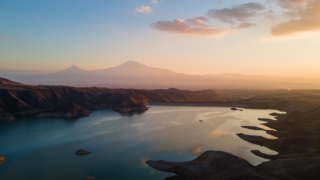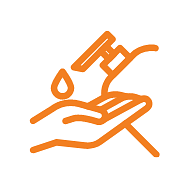
Challenging Turkey

Challenging Turkey
Our LHO Ararat Expedition is an incredible journey to this impressive freestanding stratovolcano where, according to biblical folklore, Noah's Ark landed after surviving the great flood. Led by our LHO Team Leaders in close collaboration with our local experts, this safety-driven trekking adventure is curated to blend an epic summit experience above 5000 meters with local culture, comfortable accommodation, and great food!

TRIP TYPE
Climbing and Mountaineering

DURATION
7 Days

DESTINATION
Turkey
1
Led by our seasoned LHO Team Leaders with years of high-altitude experience in collaboration with our local certified experts.
2
Immerse yourself in the culture and vibrancy of a region, and a mountain, that is at the center of Abrahamic religious traditions.
3
100% safety record on all our altitude expeditions.






DATE & STATUS
PRICE
TEAM LEADER
AVAILABILITY
WHAT'S INCLUDED IN THIS TRIP
WHAT'S NOT INCLUDED IN THIS TRIP
DAY 1: WELCOME TO ARARAT
The first day of our adventure is dedicated to arrivals. You’ll be met by a member of the LHO team and taken to meet the rest of the group in the town of Van. We’ll be running a local tour of the area on arrival day, so we’ll shuttle you to wherever the team is based on your arrival time. We recommend arriving no later than 4 pm on this day as we’ll be traveling together to Dogubayazit around 3 hours away. For those of us arriving after, please be sure to coordinate your transfers to Dogubayazit with the LHO Base Camp team before the trip start date.
For those of us arriving early, we’ll benefit from a boat trip to Akdamar Island to see the Cathedral Church of the Holy Cross. Lunch is also included on arrival day, so do try to make it if you can. Once the team arrives, we’ll begin our shuttle ride to Dogubayazit, the last town at the foot of Mount Ararat. Although we usually arrive after dark, it may be possible to see the mountain from the road as we begin to approach the town. It’s very impressive.
Once we arrive, your LHO Team Leader will check you into our accommodation and let you know the time and place for dinner. We can’t be in Turkey and not have Kebabs on the first day, so make sure you’re hungry! Dinner will be the first opportunity to meet everyone, hear the detailed briefing from your LHO Team Leader and local lead guide as well as ask any questions you may have about our epic adventure together. The first round of drinks is on us!
DAY 2: OUR EPIC ADVENTURE BEGINS
Distance: 7.2 KM | Ascent: 1,315 M | Descent: 0 M | Max Altitude: 3,366 M
Our first full adventure day starts with an early breakfast. We’ll be checking out from our hotel. Those of us who have luggage that isn’t needed for the mountain can leave it in the hotel storage for the duration of our trek. After breakfast, we’ll jump into our shuttle for the two-hour journey to the trailhead of Mount Ararat. There are usually some check-in formalities that take place at the check-in to the mountain that shouldn’t take very long.
Once everything is complete, we’ll start to make our way towards the first camp on the mountain. The initial part of this expedition will be dedicated to finding a sustainable and steady pace to follow throughout our journey. This is more of an art than a science, and your LHO Team Leader is very well versed in helping us find that pace that enables us to maintain our energy and efficiency which is crucial to success in high-altitude environments.
The trail departs from the town of Cevirme at the base of the southeastern slopes of the mountain. Because of the dry nature of this region, our view of Ararat summit directly to our north is uniquely unobstructed for the majority of the trail. The path is generally dry soil for this section and is on a moderate incline gradient giving us plenty of opportunity to slowly get into the swing of things without being too engaged from the outset.
As we ascend the trail, the short grass vegetation quickly gives way to ever drier rocky environments that are typical in the higher altitudes of this region. Lunch will be at a picnic spot midway up the trail followed by a break to recover and digest. The second section of the trail follows a ravine that descends from the snow caps of the summit. As we ascend alongside it, the moderate incline begins to steepen until we reach a series of short switchbacks that top out at Camp 1. This camp sits at an altitude of 3,366 meters and has incredible views of Little Ararat to the south and the hilly plains of Eastern Turkey behind us.
Arriving at our campsite for the first time can feel a little bit overwhelming. There’s often a lot happening. The best thing to do is to first set up our sleeping bags and the interiors of our tents to be exactly as we want them for when we go to sleep. Using daylight hours makes it much easier.
Once you’re all set up you can explore our camp facilities, including our common mess tent. Your LHO Team Leader will give you a quick tour, including how to use our private toilets, and will be on hand to make the check-in process as easy and as smooth as possible. Dinner will be prepared at the camp by our expedition chef. At dinner, we’ll receive a detailed debriefing on the day and hear tips on what to improve on for the following day. We’ll also hear a full briefing on the expectations for our next day on the trail.
DAY 3: GETTING USED TO HIGH ALTITUDE
Distance: 3 KM | Ascent: 451 M | Descent: 451 M | Max Altitude: 4,000 M
Our second day on the trail is dedicated to acclimatization. This word gets thrown around quite often, and it’s important to understand exactly what is meant by that. As we go up to higher altitudes, there is less pressure in the atmosphere. Pressure is what pushes air particles together. So, as we get higher into the atmosphere, the lesser pressure means that each breath we take consumes fewer elements and particles usually pushed closer together at sea level. The element of most concern for us is, of course, oxygen. Our bodies, being the incredible things that they are, recognize this immediately and start producing more red blood cells to compensate for the less oxygen being consumed with each breath. The process of reaching that efficient equilibrium of red blood cells for the altitude level that we reach is what we mean when we say acclimatization.
One of the ways in which we enable our bodies to do that efficiently for higher altitudes is to trick the body by exposing it to high altitude and then treating it to lower altitude to recover, and this is exactly what we’ll be doing on this day. After breakfast, we’ll depart the camp with the aim of reaching 4000 meters of altitude. The trail we follow is northbound in the direction of Camp 2, although we won’t get that far. Ultimately we need to strike a balance between enabling acclimatization and also allowing our bodies to rest and recover.
The trail from Camp 1 follows a ravine until it reaches a small couloir that climbs gradually before joining a series of switchbacks that bring us higher in altitude. The aim is to reach the midway point of these switchbacks before tracing our steps back to the camp. We’ll be packing light on this day since we won’t be gone for long. Once we reach the high point, we’ll have a picnic lunch to maximize our time there before descending. The afternoon will be free to rest and enjoy the incredible scenery. Dinner will be at the camp where we’ll receive a detailed briefing on the next day’s adventure.
DAY 4: THE SUMMIT APPROACHES
Distance: 2.3 KM | Ascent: 692 M | Descent: 0 M | Max Altitude: 4,200 M
We’ll be leaving our camp today. Departing from the camp for the first time can also feel quite overwhelming. There’s always this sense that there’s a lot to do. The key is to follow a sequence that enables you to be efficient. We recommend packing your personal gear into the duffle bags and wrapping up everything that may need to be done in the tents before coming to breakfast. This allows our portering team to pack up the camp and start making their way to the next camp while we have breakfast. This also takes the pressure off having to interrupt our meal to go back and forth to our tents. Your LHO Team Leader will be on hand to help you pack efficiently and provide you with support and advice.
After breakfast, we’ll put on our backpacks and grab our trekking poles before hitting the trail in the same direction as our acclimatization hike from the previous day. The trail once again follows the ravine until we reach the switchbacks. From there, we’ll continue to ascend past the 4000 meter mark and onto the wide ridge to our right that exposes us to views of the plateaus along the Armenian side of the border. We usually stop here for a picnic lunch and a brief rest before continuing along the trail.
We’ll follow the ridge as it eases its way up along a more gradual gradient until we reach Camp 2, which sits at the base of the volcano cone beneath the summit of Mount Ararat. During our normal climbing seasons, there is very little snowfall at or above Camp 2, and we rarely require the use of any technical gear. However, the weather can be unpredictable, and we may be required to use basic crampons on our trekking boots to ascend past Camp 2. If they are needed, your LHO Team Leader will provide you with them. We’ll also have a chance to learn some basic skills on how to use them while at the camp.
Dinner will be served early at Camp 2 to get as much rest as possible for our summit push early the next morning. A detailed summit briefing will be provided by your LHO Team Leader and local lead guide during dinner.
DAY 5: SUMMIT. SUMMIT. SUMMIT
Distance: 7.2 KM | Ascent: 1,013 M | Descent: 1,698 M | Max Altitude: 5,137 M
The departure time is dictated by a combination of weather forecasts and the general pace of the team. We typically start in the predawn hours to benefit from cold conditions that make the trail easier to walk on, especially if there is snow. It also gives us an opportunity to gain as much altitude as possible before the sun comes up, which gives us that extra boost of energy to finish the trail.
After a light breakfast, we’ll depart the camp following a direct northbound ascent towards the summit. We won’t need to pack up our duffle bags in the morning since we’ll be returning to this camp before descending to Camp 1 later in the day. The trail continues along the ascending ridge that brought us to Camp 2. As we gain altitude, the expansive slopes of the mountain will appear to narrow as we approach the top of the cone, which forms the meeting point of all the mountain slopes. At the top of the ridge, the trail begins to widen as we approach the shoulder of the summit. Topping out on the shoulder brings relief from the ascending trail as it becomes much more gradual. Here, it is very typical to find snow.
From the shoulder, the trail turns right in an eastbound direction where we’ll have an unobstructed view of the summit only a short distance away. The last climb may appear short, but we are now above 5000 meters, and what may feel like an easy task at sea level or even at Camp 2 can feel like a tall order. We will maintain our steady pace as we slowly ascend across the snow-capped cone until we finally reach the summit.
The amount of time we can spend at the top depends on weather conditions and the energy levels of the group. Remember that the longer we are exposed to the elements and the higher altitude environment, the lower our energy levels become. Once we’ve taken our pictures and had the opportunity to appreciate our epic achievement, we will begin our descent towards Camp 2. The descending trail traces our steps across the cone, down to the ridge, and finally back to Camp 2.
Descending from altitude is different from ascending in the sense that the faster we lose altitude, the better we feel and the faster we start to recover our energy. This doesn’t mean we’ll be running down. What it does mean is that those of us who are feeling better descending at a more rapid pace will be able to do so. The last person on the mountain will always be an LHO team member, so those of us who are more comfortable at a slower pace shouldn’t feel pressured to go faster at all. We will regroup at Camp 2 where we’ll have lunch, rest briefly, and pack up our tents before descending further to Camp 1.
The trail to Camp 1 follows the same ravine we traced during the earlier days of our expedition. Our incredible day ends with dinner at Camp 1 and a well-deserved rest.
DAY 6: HOT SHOWERS AWAIT!
Distance: 7.2 KM | Ascent: 0 M | Descent: 1,315 M
Our last day on the mountain begins with breakfast. This will be our last opportunity to bid farewell to this incredible place. Although our primary objective may be behind us now, it is important to keep our focus and our morale high because it isn’t over until we’re under our hot showers at the hotel.
We’ll follow the moderate descending trail that begins with a few short switchbacks before the trail becomes more direct as the slopes of the mountain become less and less challenging. The familiar short grass vegetation will start to reappear, and the farmlands in the distance will start to inch closer and closer until we finally reach Cevirme, the end of our trail.
The checkout procedures are generally quite quick, and we’ll be in our shuttle in no time. We usually arrive quite early, so we’ll have the opportunity to make a quick stop at Ishak Pasha Palace, a 17th-century Ottoman gem, and local handicrafts and carpet houses. These are unique cultural experiences that we may never have an opportunity to experience, so it’s worth the stop.
From there, we’ll be transferred back to Dogubeyazit where our hot shower and warm beds await! Our final dinner together will be at a local restaurant. Your LHO Team Leader will let you know what time we’ll be meeting up to head out closer to the time. The last round of drinks is on us!
DAY 7: UNTIL NEXT TIME!
Our final day together is dedicated to airport transfers. Breakfast is included on this day. We recommend choosing flights from 1 PM onwards to have enough time to reach the airport in Van. If you require a special transfer, please let us know as early as possible for arrangements to be made. For those of us departing later in the day, we’ll have the opportunity to visit the Muradiye waterfall and Van Castle as part of the itinerary. Individual drop-offs to the airport will be made based on your departure times. Please make sure that you’ve supplied the correct departure details when filling out your pre-trip Team Details Form. If your travel itinerary has changed, please inform your LHO Team Leader as early as possible for arrangements to be made in good time.

OUR COMMITMENT
We are dedicated to ensuring that everyone involved in our services receives a fair living wage in their respective countries. We invest in our team members, fostering upward mobility within the adventure travel industry, expanding educational opportunities, and offering support wherever we can. By joining an LHO adventure you are directly impacting the incredible people and the remote communities that make these life-changing experiences possible.
LEARN MORE
HEALTH & SAFETY GUIDELINES
We do our best to ensure your wellbeing on LHO adventures. That's why the facilities we use throughout our trips are required to meet our health and safety standards. We also follow the laws and protocols of every country that hosts our adventures. This extends to national regulations requiring Covid-19 testing, vaccination certificates, mask wearing or any other local guidelines that may apply. Contact us for the most up to date protocols related to your destination.
LEARN MOREDO I NEED ANY TECHNICAL GEAR?
No, you don’t. Ararat is a hiking trip, and we will not be using any technical gear. However, in some instances we may use basic crampons provided by us. This is in the event of heavy snow cover on the trail.
No, you don’t. Ararat is a hiking trip, and we will not be using any technical gear. However, in some instances we may use basic crampons provided by us. This is in the event of heavy snow cover on the trail.
WHERE DOES THE DRINKING WATER COME FROM? IS THERE A NEED TO GET A PURIFIER FOR DRINKING OR TABLETS THAT PURIFY THE WATER?
Drinking water is sourced from local springs on the mountain then boiled and sanitized with special tablets to ensure it's safe to drink. You will have unlimited treated water refills throughout the expedition.
Drinking water is sourced from local springs on the mountain then boiled and sanitized with special tablets to ensure it's safe to drink. You will have unlimited treated water refills throughout the expedition.
WHAT IS ALTITUDE SICKNESS? WILL IT AFFECT ME?
The higher we go, the less oxygen there is in the atmosphere. As a result, some of us may experience altitude sickness that can take the form of mild headaches and general fatigue and progress to nausea and shortness of breath. Our route up Ararat will enable us to properly acclimatize and limit our exposure to these symptoms. There is no rule on how and when altitude sickness will occur. You may not experience even the mildest symptoms. If you do, your team is trained to recognize symptoms and
The higher we go, the less oxygen there is in the atmosphere. As a result, some of us may experience altitude sickness that can take the form of mild headaches and general fatigue and progress to nausea and shortness of breath. Our route up Ararat will enable us to properly acclimatize and limit our exposure to these symptoms. There is no rule on how and when altitude sickness will occur. You may not experience even the mildest symptoms. If you do, your team is trained to recognize symptoms and assist you.
SIGN UP TO OUR NEWSLETTER
PAYMENT PLANS AVAILABLE
£2,300
SIGN UP TO OUR NEWSLETTER
INQUIRE NOW
This adventure is only available as a private trip and is customized to your requirements, experience and skill level. To get started, please fill out the form below. We’ll be in touch soon to put it together for you.
"(Required)" indicates required fields
CONTACT US
We’re passionate about guiding you to epic adventures and beyond. If you have any questions at all, don’t hesitate to reach out. We’d love to hear from you.

